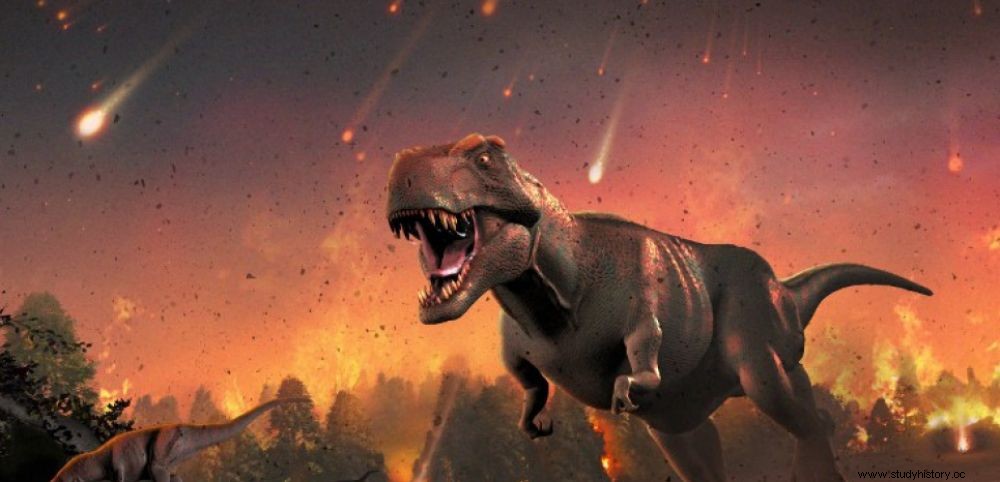 Along with the dinosaurs many marine species became extinct.
Along with the dinosaurs many marine species became extinct. DEVASTATION . The impact of a huge asteroid 65 million years ago caused the extinction of non-avian dinosaurs and with them almost 50% of living species. The tragedy has had repercussions to the deepest of the oceans where marine life has also come to a sudden halt. But some species living in the depths have managed to survive, which astonishes scientists who wonder how they were able to survive when the impact destroyed practically all the flora and fauna on the surface (including 93% of the nanoplankton), which fed them. New studies of surface shells and once-living deep-sea organisms recovered from Atlantic seafloor cores, however, reveal that some algae and bacteria withstood the cataclysmic conditions that prevailed after the shock with the asteroid. These microorganisms ensured a constant flow of organic matter that continuously replenished the seabed and provided enough food for the life forms that occupied it to feed. "Our results demonstrate that despite a massive and instantaneous wave of plankton extinction, certain photosynthetic organisms such as algae and bacteria persisted and fed the species of the seabed which were thus able to survive. Here we answer a question that remained misunderstood about this period "explains Heather Birch, from Cardiff University in an article published in the journal Geology . In addition, the researchers calculated that the marine ecological niches, emptied of their occupants, were filled in 1.7 million years, twice as fast as estimated. "After that the deep sea food supply was fully restored by the arrival of the new species "said Heather Birch. 66 million years ago, at the time of the impact, the Earth was experiencing a period of environmental upheaval with significant volcanic activity, rising temperatures and water levels. These climatic changes weakened dinosaurs with a decrease in herbivorous species that were preyed upon by other carnivorous dinosaurs. Had the asteroid hit Earth a few years earlier or later, the latter might have survived, scientists believe.
